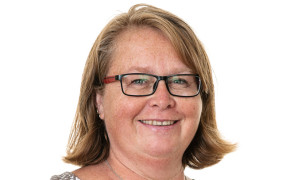Mönsterås new library (2013) is a low energy building with triple glaxed windows, PV and sedum roof, heated with district heating produced by waste heat.
When the municipality decided to build a new library, they wanted to demonstrate low energy building technique upon a public building. The aim was to design a green building with low energy costs and low environmental impact. The building is library, archive and café. Total 1150 m2 in a central part if the town open for all citizens. Walls and roof are wood construction. Sedum and 200 m2 PV plant on the roof. The aim was to construct a airtight building and reduce thermal bridges. The heating is 2 pipe system with a district heat exchanger. The district heat is produced by waste heat from nearby pulp factory, RES. The ventilation system has rotating heat exchangers which recovers 80% of the energy. The PV plants produces 22 MWh/year. The lighting is controlled by motion sensors. The energy production on the roof as well as the energy consumption in the building are monitored and visible for all visitors in the building. Sunscreens are reducing the need for cooling. The energy consumption is 30% less than a standard building.
The call for architects was a competition won by Atrio Arkitekter Kalmar AB. During the project the entrepreneurs were trained in passive house technology to prevent mistakes during the process.
Resources needed
The total cost of the project was €3.200.000 including furnishings and artistic decorations. Funding from the own resources of the municipality.
Evidence of success
This was the first public low energy building in Mönsterås and has been well received. The indoor environment is highly rated. The standard demand at the construction time was 104 kWh/m2and year. The monitored energy usage is 79 kWh/m2and year (2014). The experience from the project has paved the way for the municipality to continue investing in low-energy buildings. The library has become an important symbolic building for the municipality's ambition to display and inform about green buildings.
Difficulties encountered
Problems occurred. The wooden floor in the basement detasched from the concrete surface since wrong material was chosen. This caused extra work and time. A new solution for the floor was chosen.
Potential for learning or transfer
The experiences from the low energy library building is well documented and therefore accessible for followers.stp
Tags: Energy, Efficiency, Public sector, Leisure








